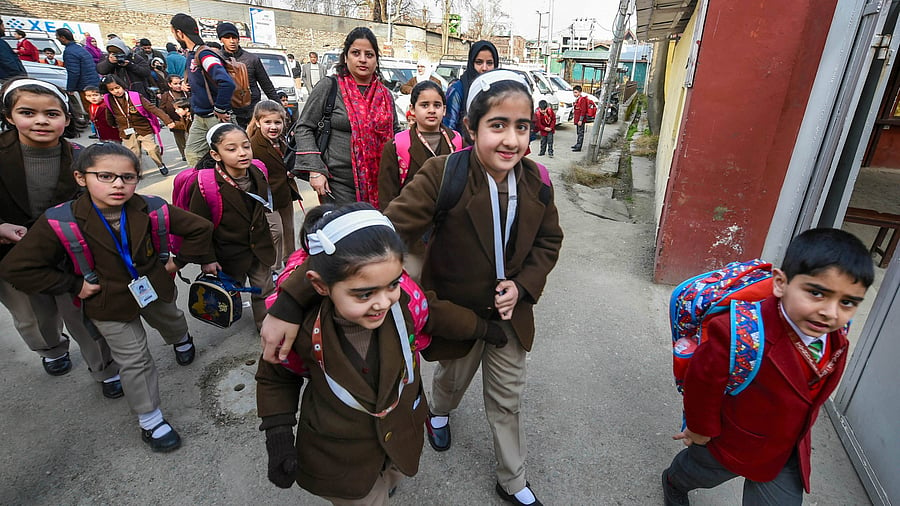
Image showing children arriving for school in Srinagar.
Credit: PTI File Photo
Srinagar: In a shocking revelation, a recent government report has highlighted the alarming gaps in the academic abilities of students in government run schools in Jammu and Kashmir with over 52 per cent of Class VIII students unable to read a simple text meant for Class II students.
The Annual Status of Education Report (ASER) of 2024 report states that only 47.2 per cent students in Jammu and Kashmir were able to read 2nd standard level text in government schools. More than 70 per cent of these students struggle with basic division tasks in mathematics, further emphasizing the growing educational crisis in the Union Territory.
The survey suggests that the reading of the books of junior classes was in decline as at least 55.5 per cent students were able to read 2nd standard level text in 2018 that reduced to 50.2 per cent in 2022 and 47.2 per cent in 2024.
The survey further reveals that only 28 per cent of students in 8th standard were able to do the tasks of division in Mathematics.
These statistics, drawn from a series of assessments, have raised serious concerns about the quality of education being imparted in government run schools. Experts have pointed out that the poor performance of students is indicative of both a breakdown in the education system and an urgent need for reform.
“These results are alarming,” a senior official of the School Education department said. “The students who are failing to read simple texts or do basic division tasks are not just struggling with individual subjects—they are lacking essential learning skills that affect their overall academic performance.”
“The root causes of this educational crisis are multifaceted. Years of political instability, the disruption caused by frequent strikes, and a lack of consistent academic assessments have all played their part,” he said.
The situation is particularly grim in rural areas of Jammu and Kashmir, where access to quality education and skilled teachers is limited. The existing infrastructure, while improving in some areas, remains insufficient to cater to the growing needs of the student population.
The ASER report states that the out of school figures for boys and girls was low in Jammu and Kashmir even in the age group of 15-16. Data from ASER show that even those in the age group beyond 6-14 have high enrollment levels.
Pertinently, the sampling of the survey is based on selection of 30 random villages in each district and 20 households in each village. It also surveyed all children of age 3-16 in household and assessed all children of age 5-16 in household.